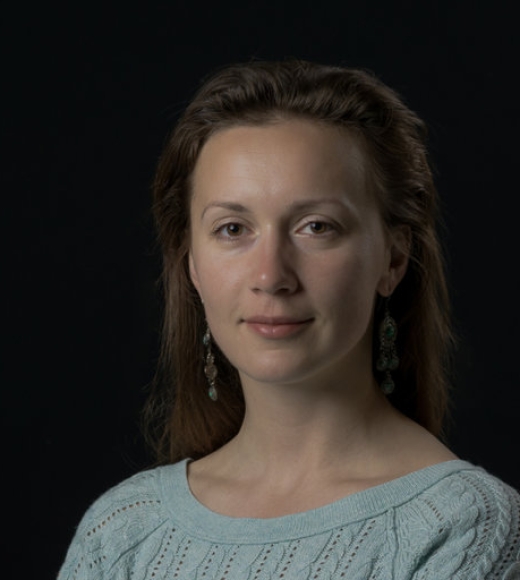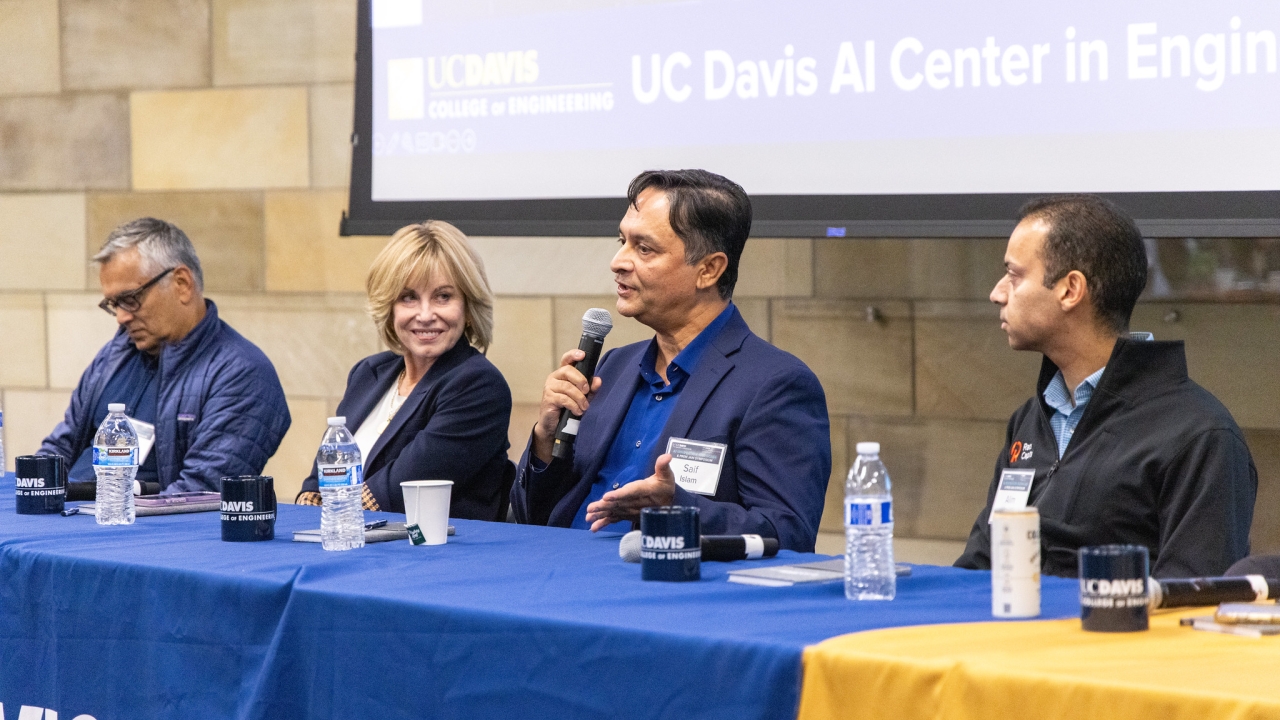A Conversation with Three-Time Engineering Alum Diana Gamzina
University of California, Davis, alum Diana Gamzina has been making headlines due to her significant contributions to the field of millimeter-wave power amplifiers. Just this February, she secured $15 million dollars in funding to expand her company, Elve.

Founded in 2020 in Half Moon Bay before relocating to Davis in 2021, the company produces traveling wave tube amplifiers, or TWTAs, at a very low cost. TWTAs are a kind of vacuum electronic device crucial for enabling the next generation of wireless communications, like 6G and beyond, but are historically expensive to manufacture.
Gamzina’s company builds off of her research and connections made as a student at UC Davis. In the summer of 2008, after receiving her dual Bachelor of Science degree in mechanical engineering and materials science, Gamzina worked in the lab of Distinguished Professor of Electrical and Computer Engineering Neville Luhmann, who specializes in vacuum electronics. In that role, she fell in love with millimeter wave technologies that serve as high-power sources in radar systems and communication satellites, among others.
She continued working with Luhmann as she pursued both her Master of Science and Ph.D. in mechanical and aerospace engineering — going on to win the college’s 2018 Zuhair A. Munir Award for best doctoral dissertation for research into vacuum electronic devices that operate at terahertz frequencies.
After graduating, she worked at SLAC National Accelerator Laboratory but kept in touch with College of Engineering community members like Luhmann, who encouraged her to pursue the idea of starting a company that produces low-cost TWTAs. In fact, her company shares lab space with researchers from the Department of Electrical and Computer Engineering and often hires students working under Professor Billy Putnam.
Gamzina recently spoke with Microwave Product Digest to discuss the innovations she’s made as well as current hurdles and future accomplishments she hopes to make with Elve. What follows is an excerpt from Microwave Product Digest’s full interview.
Microwave Product Digest: So, give [us] an idea about what Elve is trying to achieve.
Diana Gamzina: The need for millimeter-wave and even terahertz frequencies has become apparent to everyone in the commercial and defense domains. TWTAs are the only technology that has demonstrated significant RF power and efficiency at these frequencies. So Elve is focusing on bringing that technology to the market at scale at a cost low enough to be used on every single cell tower or low Earth orbit satellite. To do that requires innovation in electron emitters, circuit manufacturing, power supplies and the design and construction of the amplifier itself.
MPD: Tell [us] about some of the advances you’ve made.
DG: We’re integrating advanced materials and manufacturing technologies into vacuum electronic devices, significantly improving efficiency and reducing the cost of TWT amplifiers compared to traditional methods. We’ve developed TWT design and fabrication techniques that employ nanocomposite scandate tungsten emitters, providing more efficient electron emission at lower temperatures.
The tungsten is doped with scandium oxide, which enhances its electron emission properties, resulting in a lower work function and higher emission current densities. They can also operate at lower temperatures, which increases their efficiency and lifespan.
MPD: Is there a point where TWTs can be cost-competitive with solid-state power amplifiers, or SSPA, in space and other cost-sensitive applications?
DG: Absolutely. That’s our mission, and it’s achievable, especially when considering efficiency. With an SSPA that has 10% efficiency at these very high frequencies, you’re wasting 90% of your energy. In space, that’s a crucial consideration. A TWTA can provide the broad bandwidths required to achieve gigabit-per-second speeds, and we can reach 50 percent or even 70 percent efficiency, which has a massive impact in space when you’re reliant on solar panels to capture energy and batteries to store it.
MPD: Do you have any competitors among the traditional TWT manufacturers?
DG: I think everyone is doing something in millimeter waves to make this happen. But I think about competition from a solution perspective. We’re focusing on the millimeter-wave broadband communications market and space communications, so in some cases, lasers are our competition. The key to accepting TWTAs in these highly competitive applications is high performance, low cost, and the ability to supply them in high volumes. Delivering TWTAs in high volumes is not realistically possible using traditional manufacturing methods.
MPD: By the way, how did you come up with the name “Elve”?
DG: An ELVE, or Emission of Light and Very Low-Frequency Perturbations due to Electromagnetic Pulse Sources, is a brief, intense flash of light that occurs above active thunderstorms. It appears as a rapidly expanding ring up to 300 km in diameter, lasting only a few milliseconds. It appears to travel faster than the speed of light as it ionizes particles in parallel as it propagates. I thought it represented what we’re trying to achieve: provide ultra-high speed connectivity by utilizing frequencies in parallel where bandwidth is available to utilize such an approach.




